If climbing Kilimanjaro is on your bucket list, then you’ve come to the right place. Everyone will tell you that it’s challenging and rewarding – but what you really want to know are the details.
Do you need trekking poles? What’s the weather like? How early do you start each day? Who and what will you encounter along the trail? Speaking of trail, which is the best route to take to the summit?
Read on for answers to all these questions and more from Kyle Super. Kyle has trekked all around the world and climbed to the top of Uhuru Peak (5985m/19,635ft). As a well-travelled trekker, Kyle has a great perspective of how Kili compares to the world’s best treks. He took the time to speak with us about his experience – the highs and the lows.
Tell us a bit more about yourself and where have you travelled?
I am originally from South Africa and moved to Australia over two decades ago. I worked as a travel consultant for World Expeditions in the Sydney Office for many years.
I have travelled across the world to all seven continents. I’ve trekked in Peru, North America, Nepal, China, New Zealand, and Europe. Climbing Kilimanjaro was my first time trekking in Africa.
Why do you love trekking so much, and what keeps you coming back for more?
It’s mainly the physical challenge that keeps bringing me back to trekking, as well as getting away from the hustle and bustle of everyday life and into nature. I also love the stress relief of trekking and being able to just switch off. You’ve got everything taken care of, and all you have to think about is putting one foot in front of the other.
Working for World Expeditions, with hundreds of incredible adventures to choose from, why was Kilimanjaro on the top of your list?
I first saw Kilimanjaro in 2010 on an overland trip across Africa that I was doing from Cape Town to Cairo, and since then, it has always been a goal to climb it. The snow-capped peaks were captivating, and it’s been stuck in the back of my mind ever since as something to conquer and accomplish.
When did you climb Kilimanjaro, and who was in your group?
I climbed Kilimanjaro with my partner in October 2016. We had travellers from all over the world in my group, including from UAE, the UK, America and Australia. There was also a wide age range with people from in their 20s up to their 60s.
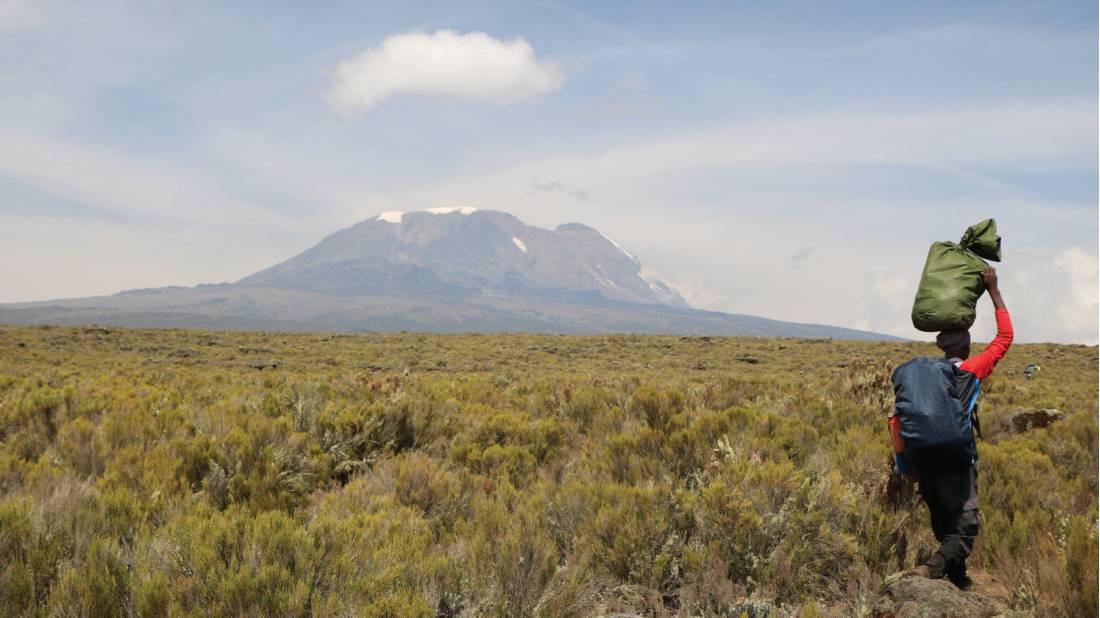
Which route did you choose and why? What’s the ‘best’ route, in your opinion?
One of my biggest prerequisites for trekking is having something remote and not crowded. There are quite a few routes you can choose from to reach the summit of Kilimanjaro. Most trekkers choose Machame or Marangu, which can get quite busy. The Marangu route, in particular, can sometimes have up to 1,000 people per night at each campsite. I chose the Shira Route because it avoids most crowded trails, and you share your campsite with only one or two groups each night. You only see more people towards the summit.
Another important aspect to consider when choosing a high-altitude trek is to choose a route that will give you ample acclimatisation. There are a few routes that give you the highest success rates including Machame, Lemosho, Shira and the Northern Circuit. Again, I chose Shira because it avoids the crowds. Lemosho and the Northern Circuit are also really great options if you want to encounter less people.
No matter how fit you are, you can never know how well your body will react to high altitude each time. Therefore, you always want to give yourself the very best opportunity for your body to acclimatise. The only way you can do that is by having extra days at altitude to allow your body to create more red blood cells. When the time comes to head for the summit, you’ll have given yourself a higher chance of success. We noticed that we were handling it pretty well when we got to the summit night. Even though many trekkers in our group had never experienced high altitude before, we all managed to get to the summit.
Kilimanjaro has become very popular with charity and corporate groups due to its accessibility. Trekkers can tick it off in just over a week. What do you think about Kili’s ‘bucket list’ appeal?
It’s so much more than just a bucket list trek. Yes, Kilimanjaro is something that a lot of people feel they need to tick off their list, however, it’s such a beautiful mountain and the journey itself is something very spectacular.
There are diverse landscapes, and there are a lot of surprises along the way, like stunning meadows full of evergreen flowers that bloom throughout the whole year. There are birds and forests at the beginning of the walk that changes into a dramatic lunar landscape as you get higher. Also, people need to consider that it is a challenging trek, and they need to be serious about putting the proper training in for it. To avoid the crowds and get the maximum enjoyment out of the trip – rather than just ticking the “summit” box, it’s essential to choose a quieter alternative route.
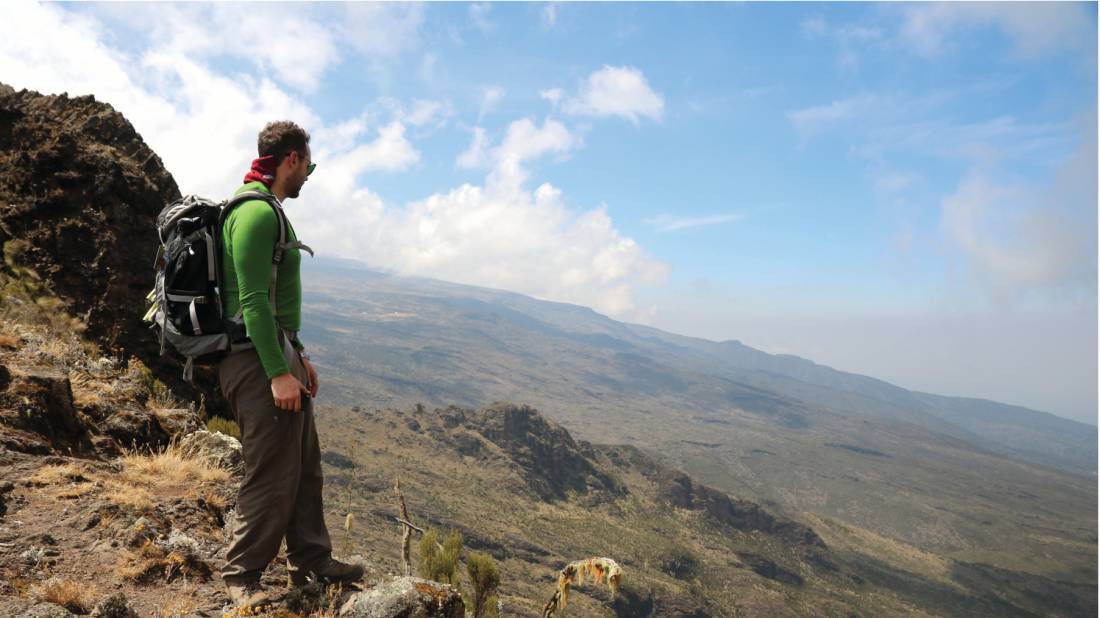
What gear do you recommend as essential?
You need to have good warm weather gear, quality trekking boots and a day pack. Make sure your boots have good ankle support and won’t give you blisters. You need to be able to walk in them for up to 10 hours.
Throughout the trek, temperatures are usually mid to low 20s (68ºF) but can drop down to zero Celsius (32ºF) at night, depending on the time of year. On the summit night, it can get up to minus -30ºC (-22ºF). I highly recommend hiring the sleeping bag and the down jacket from our local crew in Tanzania. The down jacket is Mountain Equipment brand, which is used on many six thousand meters plus climbs by mountaineers and keeps you toasty warm even in freezing weather.
Also, ensure you have good thermals and a quality rain jacket. Even though it’s not raining, it helps to break the wind. Once you book the trek, a complete gear list will be sent, so make sure you go through it thoroughly.
Did you use trekking poles?
I did bring trekking poles, which is another piece of gear I highly recommend – even if you don’t usually use trekking poles. Not so much for the uphill, but more for the downhill. You descend pretty quickly, and the ground is covered in scree, which is quite slippery. Having poles takes some pressure off your knees and ankles and provides more stability. I carried a 35 litre day pack. Make sure you choose one that has good hip and back support.
What type of clothing did you wear? Did you wear trekking pants?
I wore quick-dry trekking pants, and most days, I wore shorts because it’s actually quite warm. Even though it’s in the middle of winter, it can be quite exposed throughout the trek. Sunscreen and a good broad-brimmed hat are also essential because there aren’t many trees. You are exposed to the sun almost every day apart from the last day when you’re coming down through the rainforest.
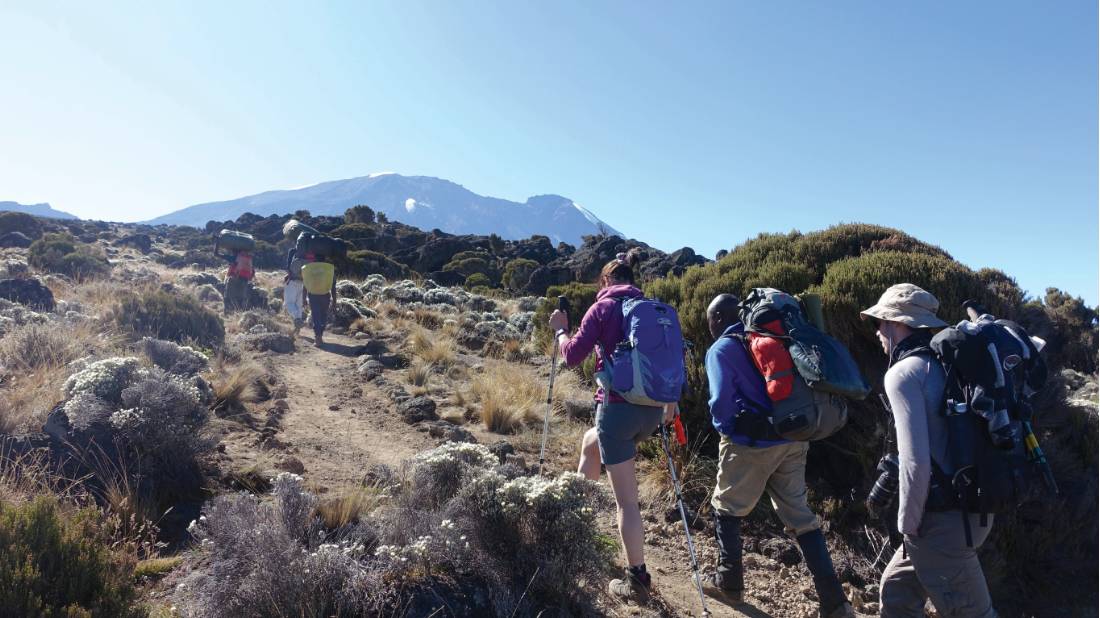
Alpine weather can be quite variable. What kind of conditions did you encounter?
The weather was very good throughout the whole trek. We didn’t get any rain, so we were very lucky. I trekked during the dry season, which runs from the end of May to the beginning of October. Although it is the coldest time of year, it is also the driest, and that’s why I chose it.
What were the guides like on your trip?
The guides and crew were the best I’ve had anywhere in the world considering all the other treks that I've done. There's quite a big crew that supports you going up a mountain for a group of six of us trekking. There was a whole team of 30 people including guides, porters and cooks. There are a few reasons for the number of crew members on the trip. World Expedition has strict limits on the number of kilograms a porter can carry which means that there need to be more porters to carry the camping equipment including the portable toilet.
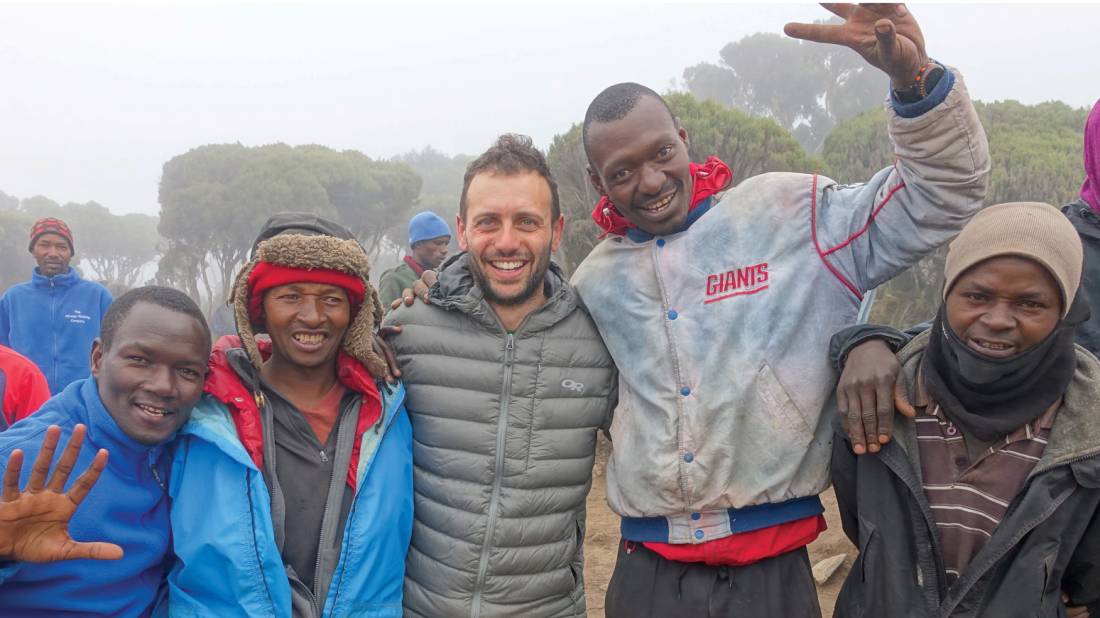
Were they supportive, and did they make people feel comfortable?
Our guides did lots of little things to help make the trek enjoyable and take the stress out of it for people who had not been trekking before. Every morning, our guide would go through the day ahead and tell us what to expect. They were constantly checking in on us to see how we were coping with the altitude. They would tell us stories about their own home life, share their culture with us, and were genuinely interested in our own lives. On the first day, our lead guide brought out the whole crew and introduced us personally to every member of the team, from porter to cook.
We felt like we had a personal connection with every single crew member. They weren’t just people working in the background. It felt like a whole family heading up to the summit. There were a few particularly challenging parts, like the Barranco Wall, which does involve a little bit of scrambling, and our guides were there to lend a hand. They sang us the entire way up, lifting our spirits.
The guides looked out for our well-being, and we felt that we were in safe hands. We knew that if anything was wrong or anyone was showing signs of altitude sickness, they would call to take us off the mountain. It wasn’t just about them getting us to the top no matter what. We didn’t see the same from other guides along the trek, where we did see people who were groggy or should have been turned back still being led up.
You said some first timers were doing the trek, so it must be pretty achievable?
As long as you are physically able and put effort into training – it is a challenge that anyone can take on. Our group had a wide range of ages and trekking abilities, with travellers from their 20s up to their 60s. As long as you walk at your own pace and you’re the kind of person who can mentally stick through 10 hours on the summit night attempt, even though it’s cold, then yes, it’s an achievable trek for anyone.
What type of food did you eat on Kili?
The food was excellent. Breakfasts were usually a mixture of hot and cold foods – including cereals, porridge, pancakes, eggs on toast and some fruit. We were provided with snacks for the day, including bananas, chocolate and biscuits. Lunch was usually at our next campsite, which would again be a mixture of hot and cold. Lunch was usually sandwiches, pasta, soup and salad.
At dinnertime, we’d always start off with a snack like popcorn or a biscuit and a hot drink. It was amazing. Dinner was three courses with anything from local cuisine like East African curries and stews to Western staples like pasta and chicken dishes. They usually took some of the spice out of the curries, so you could add some if you wanted it to. We also had a vegetarian in our group, and they were well taken care of. Surprisingly we had dessert each night ranging from cakes to jellies.
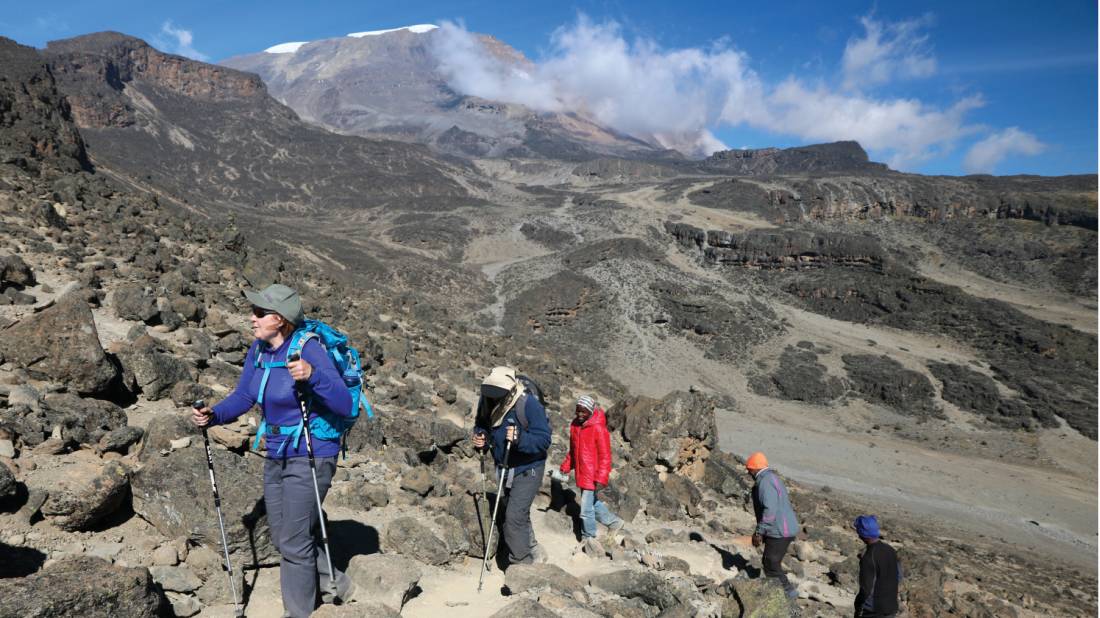
Waking up at 2 am for the summit – was it worth it?
Yes! There is something quite special about being on the crater at sunrise, above the clouds, as the savannah lights up beneath you. It’s all about mental stamina, focusing on putting one foot in front of the other and taking things nice and slow. There’s no rush to get to the top. When you get there, the sunrise just lifts your spirit, and you feel like you’re on top of the world looking down on Africa; It’s definitely worth it.
How did you find walking through the dark?
You trek through the dark so that you can get to the summit in time for sunrise. By the time you finish your long 10 hour day, it would be too late if you started any later. Also, trekking through the dark is quite good because coming back down, you realise how much distance you’ve covered. All you’ve got to look at is your feet, and you don’t worry about how much further you’ve got you to go.
What was the most memorable moment of the hike?
Probably my most memorable moment of the hike was the night after the summit. All of us had made it, there were no longer any nerves, and we were all able to relax and celebrate together. Everyone, including the guides, was singing and dancing and enjoying our final night together as a family.
What advice would you give to someone who wants to climb Kilimanjaro?
My advice for someone who wants to climb Kili is that it’s achievable if you put in the proper training. Also, I’d recommend choosing a trek that takes longer – even though you may not feel like you have the time. A longer trek will increase your summit success rate, and you’ll thank yourself afterwards. You’re giving yourself the absolute best opportunity for success and the most enjoyable trekking experience possible.
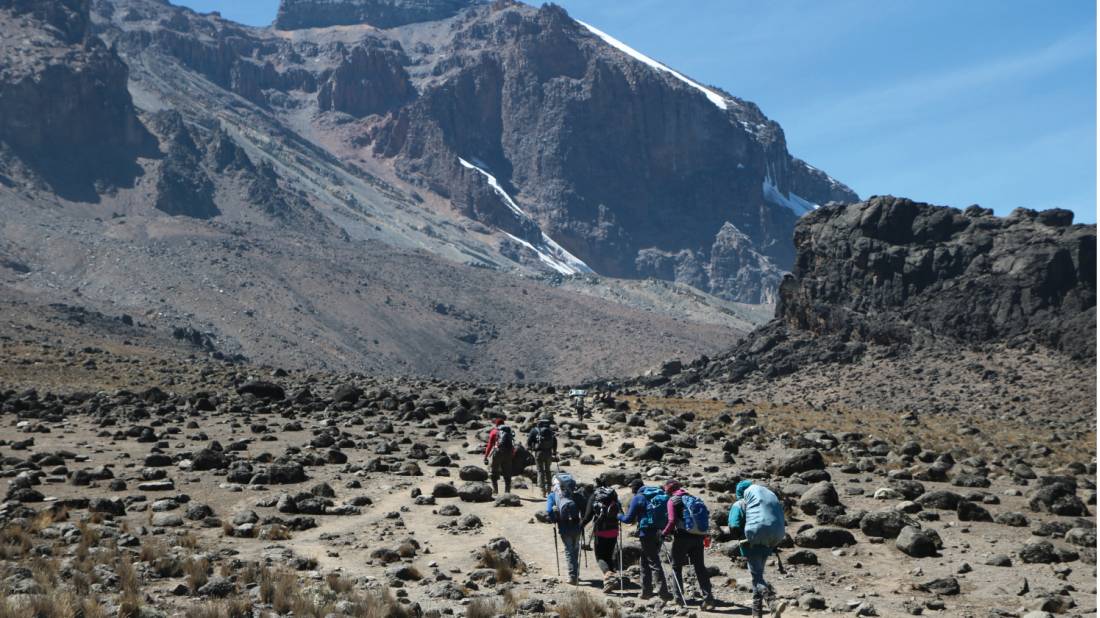
How did you train physically and mentally?
To prepare for the trek, I went to the gym two to three times a week, which usually involved some cardio training on the treadmill or rowing machine and a bit of weight training.
I think the most important part of my training came from outside of the gym and that was through bushwalking. I can't recommend doing bushwalking enough. That would involve a five to eight hour hike in my closest National Park with a day pack, using the hiking boots that I'd be using on Kilimanjaro. I made sure that I included one very long hike over eight hours to try and put myself in the mindset of the summit night.
How many months prior did you start preparing?
I’ve always gone to the gym a couple of times a week, but I started adding bushwalks about three or four months before. I wasn’t bushwalking every single week. It was one or two times a month in the first couple of months. And then, in the final two months, I was doing one every weekend.
I made sure I included a lot of steep inclines and declines because going up Kilimanjaro is basically uphill the entire way and then downhill the whole way back. If you’ve got problems with your knees, it’s a good way to strengthen your leg muscles, test your trekking poles and prepare your knees for the experience.
You’ve done a lot of independent travel; how did you find trekking with a group?
Hiking with a group of other trekkers was really refreshing for several reasons. It gave us a common goal to work towards, which meant that when some people were feeling down, you’ve got your team members there to lift you up and help you keep going. It also means that you’ve got some friendship and entertainment at the end of the night. When you get to the campsite, there’s not much to do besides enjoy the natural beauty and talking to people. That makes the trekking experience for me when you’ve got people there to share your stories with.
What’s next on the list?
Next on my list would be the Huayhuash Circuit in Peru, a beautiful remote, high altitude trek.
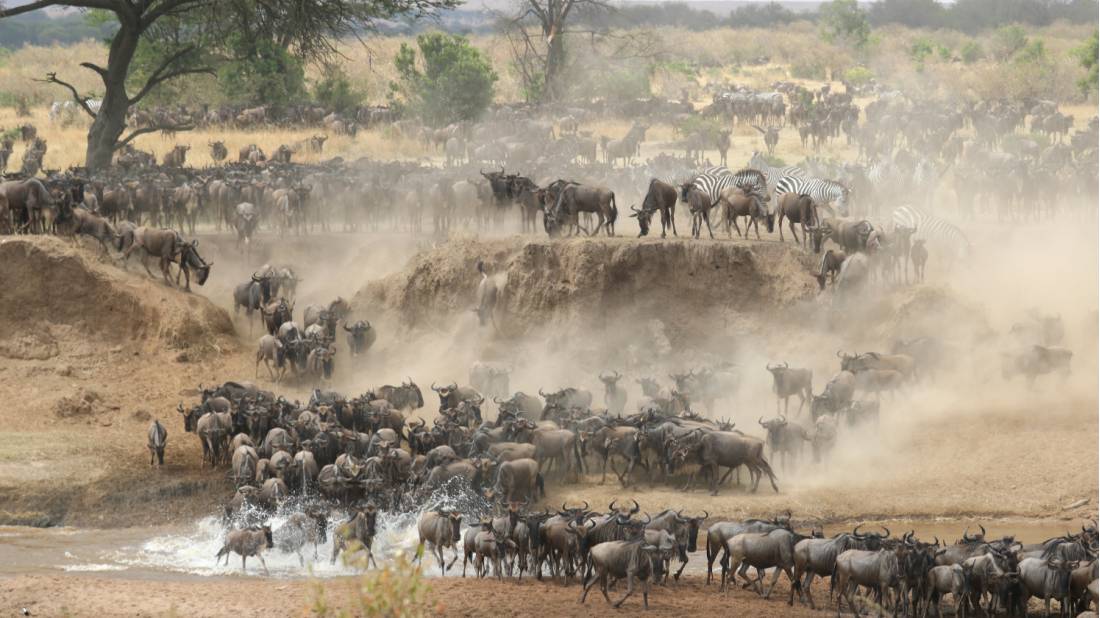
Once you’re in Africa and ticked Kili off your bucket list, what did you do after (or before) the trek?
If you have the time and budget, I highly recommend flying in a little earlier and doing a safari. That could range anywhere from three to seven days. You’ve got some of the world’s most famous national parks and the great migration of the wildebeest in the Serengeti and Ngorongoro Crater. I did the 7-day Serengeti Explorer because it takes in the very best parks, especially for that time of the year.
I always recommend doing a safari before the trek as it gives you some time to get over any jet lag and get yourself in the right frame of mind. After the trek, we added in a short stop in Zanzibar. The beaches are stunning with turquoise waters and white sandy beaches, and there are lots of fresh seafood and interesting markets to explore.
So in an ideal world, the ‘perfect’ East Africa experience would be a trek, safari and Zanzibar retreat.
Is Kilimanjaro on your next adventure? View all our Kilimanjaro treks and adventures.